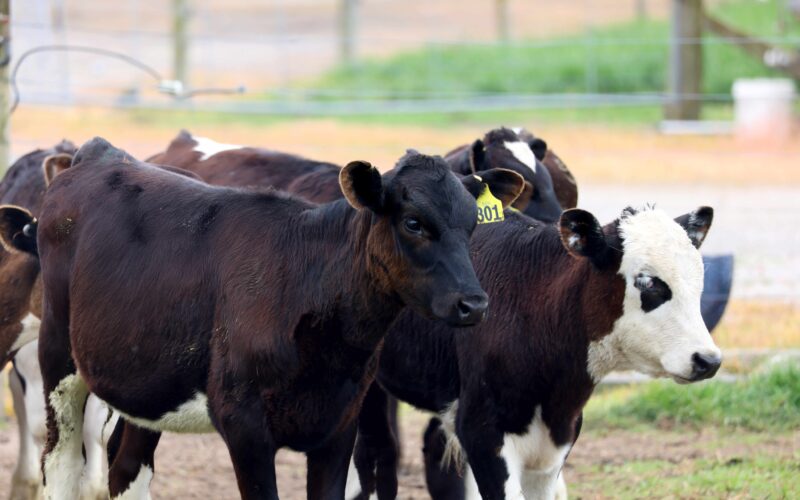
A Friesian known as No 301 is the millionth dairy animal to be genotyped by co-op since DNA analysis began.
A 540-strong Friesian herd near Te Puke in Bay of Plenty welcomed a special calf in the late winter of this year.
Calf No 301 on the farm of John Cameron was LIC’s millionth dairy animal to be genotyped since state-of-the-art DNA analysis began in the industry in 2008.
“Our farm! This farm? That calf? What are the chances?” said Jamie Iggulden, a contract milker on Cameron’s farm.
“It’s a little black calf, and it’s running around in our paddock out the front. It’s happy and healthy, and you wouldn’t think it’d even blink an eye at the thought it’s the millionth one.”
Mark Julian, LIC general manager of operations and service, said 1 million was an important milestone for the co-operative.
In 2008 LIC was New Zealand’s first dairy genetics supplier to use genomic technology on behalf of its farmers when it genotyped about 5000 sires (historical and active sires at that time).
By 2015 LIC had genotyped 35,000 New Zealand dairy animals, the majority of which were cows. These animals also provided phenotypic information, which helped LIC’s research team determine what genes could be associated with good (or poor) breeding and milking performance, including traits other than production, Julian said.
Today there were 1 million genotypes that contributed to the dataset, representing about 35 million DNA data points, he said. The data helps deliver more accurate breeding values (genomic evaluations) for farmers.
“And with tens of thousands of more calves born this season, that 1 million milestone will continue to be rapidly built upon.”
Genotyping is a familiar scientific technology among many of New Zealand’s top-performing dairy farmers.
Soon after birth, LIC uses genotype information to predict how much of a desirable, or undesirable, trait a calf has inherited from its sire (father) and dam (mother).
The accumulation of this early trait information allows the farmer to get a more accurate Breeding Worth index earlier for a calf.
This is useful to farmers because it increases their odds of retaining desirable calves for future use in their herd, as older milking cows are replaced by a new generation of emerging heifers.
In turn, this helps farmers fast-track herd performance (that is, milking and breeding) by using better genetics from one generation to the next (genetic improvement means that, over time, younger generations of cows will perform better than the previous generation).
“Genotyping a young calf essentially provides the farmer with the same information as that of a farmer who’s put their milking heifer through three herd tests,” Julian said.
“The power of genotyping a young calf is that a farmer has essentially the same reliability of information as they would have after a cow’s first milking season. It gives you that information now to make the best breeding decisions for your herd so much earlier.”
Cameron said his motive for identifying complete parentage across his herd, together with DNA-identification of traits within his replacements, is to secure the value of the herd while maintaining a focus on long-term genetic improvement.
“So, for example, when a sharemilker might come on the farm one day, from my perspective, I can have a legitimate herd for sale. The genetics, and the genomic product that sits behind those genetics, will prove how good our asset is within LIC’s (breeding index) system.”
Contract milker Iggulden said the medium-term goal for the herd is to produce an average of 400kg milksolids per cow on the System 3 farm.
That goal was yet to be reached, but it isn’t far off, he said, and gradual herd improvement is seen as a key vehicle in getting there.
In October mating season got off to a “cracking start”, with the submission rate reaching 85% within the first three weeks.
You can now read the most important #news on #eDairyNews #Whatsapp channels!!!
🇺🇸 eDairy News INGLÊS: https://whatsapp.com/channel/0029VaKsjzGDTkJyIN6hcP1K

























